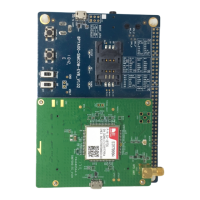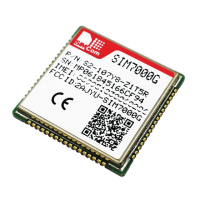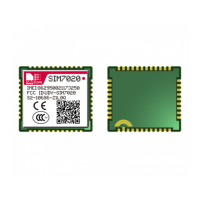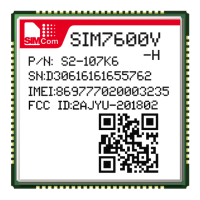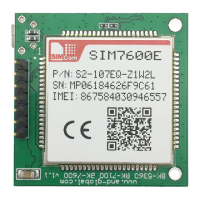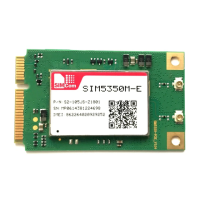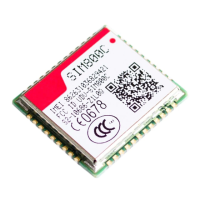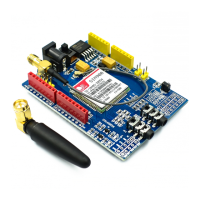Smart Machine Smart Decision
SIM7000 _Hardware Design _V1.04 2018-1-31
4.3 GNSS
SIM7000 merges GNSS (GPS/GLONASS/BD) satellite and network information to provide a
high-availability solution that offers industry-leading accuracy and performance. This solution
performs well, even in very challenging environmental conditions where conventional GNSS
receivers fail, and provides a platform to enable wireless operators to address both location-based
services and emergency mandates.
4.3.1 GNSS Technical specification
Tracking sensitivity: -162 dBm(GPS)/-157 dBm(GLONASS)/TBD (BD)
Cold-start sensitivity: -148 dBm
Accuracy (Open Sky): 2.5m (CEP50)
TTFF (Open Sky) : Hot start <1s, Cold start<35s
Receiver Type: 16-channel, C/A Code
GPS L1 Frequency: 1575.42±1.023MHz
GLONASS: 1597.5~1605.8 MHz
BD: 1559.05~1563.14 MHz
Update rate: Default 1 Hz
GNSS data format: NMEA-0183
GNSS Current consumption : 30mA (G S M / LT E Sleep, in total on VBAT pins)
GNSS antenna: Passive/Active antenna
Note: If the antenna is active type, the power should be given by main board because there is no
power supply on the GPS antenna pad. If the antenna is passive, it is suggested that the external
LNA should be used.
4.3.2 GNSS Application Guide
Users can adopt an active antenna or a passive antenna to SIM7000. If using a passive antenna, an
external LNA is a must to get better performance. The following figures are the reference circuits.
54
MODULE
53
GNSS_ANT
GND
GND
Matching circuit
GNSS Active ANT
L1
C1
47nH
C2
L2
10 ohm
33pF
VDD
Figure 27: Active antenna circuit

